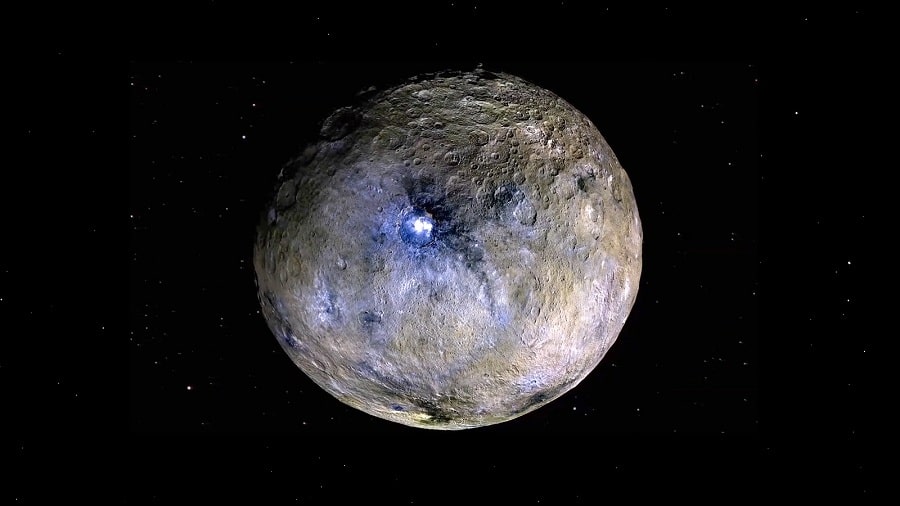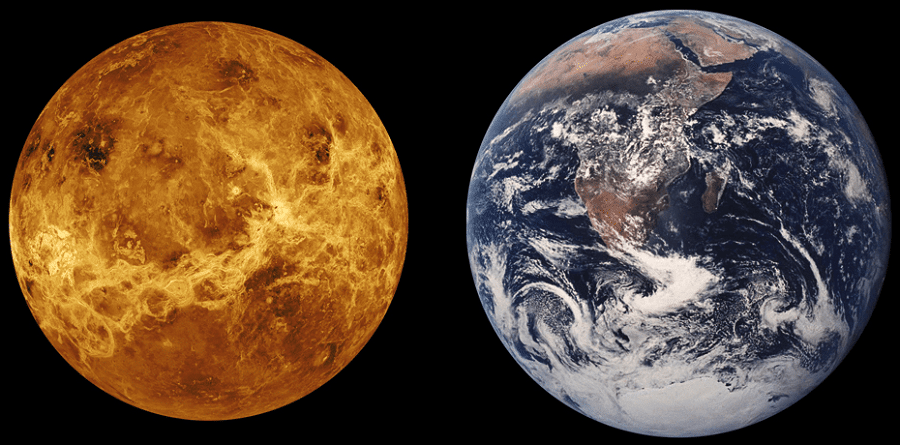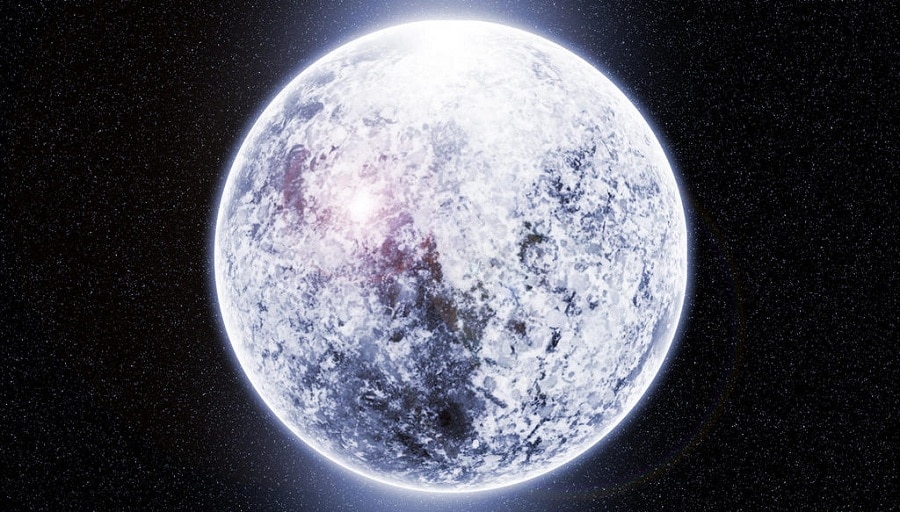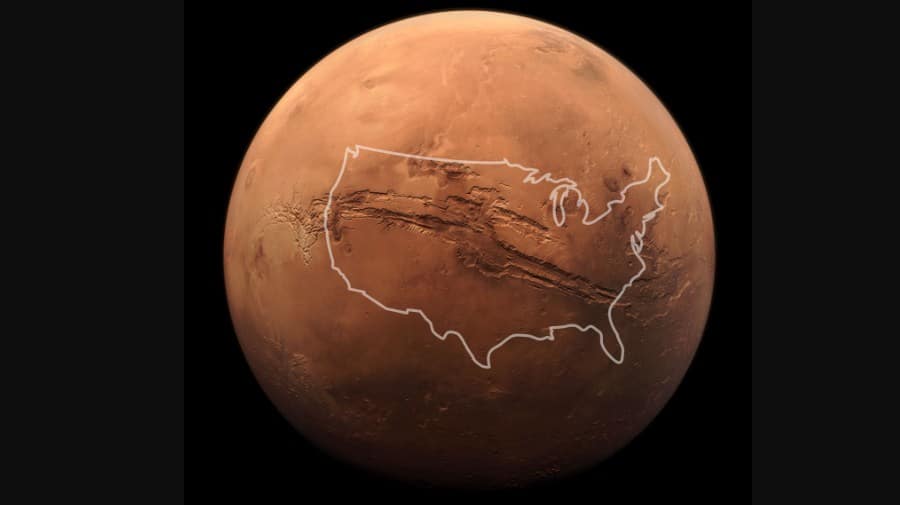
The solar system, space, stars, and of course planets bring up a lot of imagery. There are planets like Venus that shine bright and others like Mars that make you question life beyond Earth.
Venus is the second planet from the Sun. Venus is the brightest object at nightime on earth after the Moon. Venus is even visible to the naked eye during daylight hours. Learn more about Venus below!
What is defined as a planet may surprise you because it is confusing
The definition of a planet is a curious thing to anyone interested in astronomy. Basically, the overall loose definition of a planet is that it is an object orbiting the sun.
Scientifically, a planet needs to be specified as a celestial body that moves in a circular orbit around a star. More likely the big technicality about what is a planet is that it needs to orbit a star like the sun. As well, a planet is different from a star because it has motion of its own doing.
In direct contrast, a star is known to give off light. Now, a planet gives off light but it moves on its own orbit around a star. Moreover, a planet shines or is bright because the light of the sun reflects enough and emits from the surface and surroundings of the planet.
back to menu ↑
Saturn is the only planet famous for its dynamic rings
Saturn is most famous, among the planets, for its grandiose rings. No other planet has such a defining feature to such a degree overall as well. Saturn is truly stunning in every way. Rings vary in size; one measured around 200 times the diameter of the planet. So, about a billion Earths could fit inside this particular Saturn ring.
The rings of Saturn are extensive and much larger than many realize. For example, the rings of Saturn are part of an interconnected system of rings of various sizes. Moreover, the Saturn rings are made up of tiny particles that vary in size. Some rings are as large as earth and others only a meter or less. All in all, regardless of size these rings orbit Saturn in a ring-like pattern and shape.
Saturn’s rings are 175,000 miles or about 282,000 km across. However, in terms of thickness around 3,200 feet. The rings consist mostly of water ice, as well traces of rock material. Recently, a finding saw that there was a ring soo faint that it could only be visible from Earth.
back to menu ↑
Jupiter is the largest planet in the Solar System by far
The size of Jupiter is incredible because of how much bigger it is compared to the rest of the planets. Moreover, Jupiter is so large as a planet that it would be possible to put all of the planets in the solar system, from Earth to Saturn, inside it!
One of the most interesting things about Jupiter is that it spins very quickly. Jupiter will spin on its axis at a pace so quickly that a single day is only 9 hours and 55 minutes. The thought of a day that fast for a human on Earth would make someone sick.
In summary, to think about the size of Jupiter is incredible. A storm on Jupiter would be so huge and intense that it would destroy Earth.
back to menu ↑
The smallest dwarf planet in the universe is Ceres not Pluto as many think
Many may know about Pluto, however there are other planets just as small or smaller than Pluto. For example, it was recently discovered that there is a dwarf planet, which is known or called Ceres. So far, in terms of research, Ceres is considered the smallest planet in our universe.
This dwarf planet of Ceres is located between Mars and Jupiter.Ceres was only discovered in about 1801. Technically, Ceres is the smallest dwarf planet that has been discovered in the Milky Way thus far.The Milky Way is located and found in the asteroid belt. A dwarf planet is technically not a planet.
When a planet is so small that it is a dwarf planet then a planet like Ceres or Pluto don’t have gravitational forces. Moreover, the dwarf planets lack the pull and size to orbit the sun. Lastly, the dwarf planets are so small that they are smaller than the earth’s moon.
back to menu ↑
Earth and Venus are two of the most similar planets with the most similarities
Not many may know that Earth and Venus are very similar in many ways. The reasons for the similarities are fairly obvious at first like size and more. For example, Venus and Earth have the same size and density.
Some other interesting details about these planets are about the composition and core being the same. Some other amazing similarities, the orbit of Venus is very much like it is on Earth. Overall, these parallels are closest to any planet in our solar system.
Lastly, there are other natural characteristics that bring these countries together. For instance, of these two planets, both have fairly newer surfaces. Basically, the history does not go as far back as other landscapes because of change and transformation. All in all, Venus and Earth both have thick atmospheres with massive clouds and weather variability.
back to menu ↑
There is a planet in space almost entirely composed of diamonds
There is a planet made of diamonds, which was recently discovered. Researchers at Yale have found a planet and named it 55 Cancri e. This planet has a radius twice the size of earth. Moreover, this diamond planet has a mass nearly 10 times greater than Earth.
In general, this diamond planet has a surface consisting of graphite and diamond. Within space and the galaxy, 55 Cancri e is located 40 light years away. This diamond planet is visible to the human eye in the constellation of Cancer.
back to menu ↑
Uranus is a planet known more for being stormy due to various reasons
Many violent storms will affect various planets in our solar system. However, Uranus has been surprisingly more stormy than many have thought. A flight by Voyager in the 1980s discovered that Uranus is moving and changing.
Many planets may move closer to or even much farther from the sun. However, Uranus has gotten closer and this has created more disturbances. Newer evidence recovered from NASA’s Hubble telescope exposed storms actively moving inside Uranus’s blue-green atmosphere. The storms on Uranus are caused by its unique rotation and as well its growing proximity to the sun.
back to menu ↑
Jupiter has extreme and excessive Volcanic Eruptions
Jupiter has always had a variety of dynamic atmospheres and environments. Moreover, the biggest issue has always been about the reaction of the moon causing towering volcanic eruptions.
One red spot on Jupiter is the remnants of one of the biggest and most violent storms in the universe. This, causing intense volcanic activity. The story of this spot is harsh. Jupiter’s Great Red Spot created a massive storm about twice the size of the Earth in total.Also, storms can last centuries or to 20 years in total length.
Furthermore, One of Jupiter;’s biggest moons is covered by more than 400 active volcanoes. Therefore, the amount of volcanoes is so intense that it is considered the most volcanically active world in our solar system.
back to menu ↑
Mars has a valley much longer than the Grand Canyon
The Valles Marineris on Mars has been measured at 2,500 miles long. Overall, this massive area of Martian canyons is around 10-12 times as long as the Grand Canyon. Everything is supersized in Mars and especially Jupiter in comparison to Earth.The Grand Canyon in Arizona is about 277 miles long so you can imagine the difference!
Valles Marineris was discovered by the Mars spacecraft and noted by the global mapping mission in 1971. Through further discovery it was noted that Valles Marineris is about as long as the United States in total. So, the sum total of these areas is immense in comparison to most anything on Earth.
back to menu ↑
A single day on Venus is much longer than one year on Earth
As much as there are some similarities between Venus and Earth, there are also quite a few differences. For example, there is one example so large it will shock most anyone. Through research and evidence scientifically, it takes Venus longer to rotate around the sun.
In general, that means that on the axis of Venus the turn around the sun is quite a bit longer than a single year on earth. This would include the time it takes to complete one orbit of the Sun. In summary, that would be 243 Earth days to rotate once around the sun.
In comparison to the other planets, Venus has the longest rotation of any planet in the Solar System. Moreover, this makes Venus stand out among the planets. Scientifically, the reasons for this are due to the complex conditions of the thick atmosphere of Venus. The Sun’s gravity slows down against the dense atmosphere of Venus, which is best described as a “tidal force.”
















